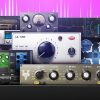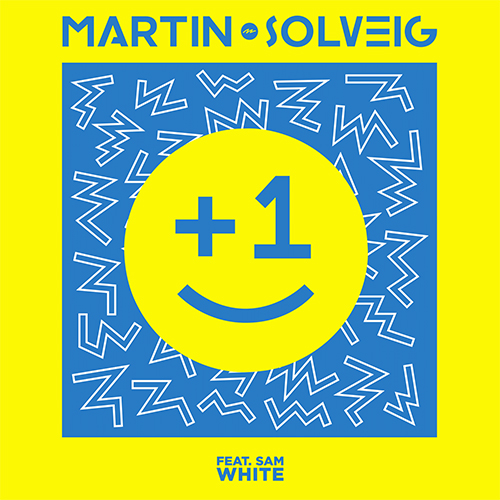-
 play_arrow
play_arrow
Clubalicious Clubalicious Radio
-
 play_arrow
play_arrow
London Calling Podcast Yana Bolder
New York, NY (April 21, 2025)—Ideally, theater takes us away from our surroundings, transporting us far from our seats to other places—so long as those places fit on a stage. However, Redwood, a new Broadway musical, takes audiences to a space that can’t fit in any playhouse, hundreds of feet above the ground in the canopy of the show’s namesake trees. Creating a multi-sensory experience that envelops audiences and brings them closer to the sky, the show cleverly makes use of integrated staging, lighting and video, all bolstered by an immersive soundscape created by sound designer Jonathan Deans.
Staged at Broadway’s Nederlander Theatre, the show stars Tony Award-winner Idina Menzel as Jesse, a New Yorker recovering from a horrible tragedy. Impetuously driving cross-country to Northern California, she soon meets a pair of scientists…and a tree. Before long, they suit up in rappelling equipment and climb among the redwoods, where Jesse’s emotional journey continues.
Throughout the show, Deans’ sound design, heard through audio equipment provided by PRG, evokes the characters’ surroundings, whether it’s the familiar jostle of New York City just outside the theater itself or the undulating serenity of a forest 3,000 miles away. However, the soundscape also underscores Jesse’s psychological state at any given moment, immersing the audience not only in the peacefulness of the redwoods, but also the emotional thunderstorm raging within the character as well.
“This production needs a multichannel, immersive system because of the kind of music and the type of visual impacts,” said Deans. “The sound has to ‘belong’ to what you’re seeing. The thing about sound is that if you’re doing something badly and it doesn’t belong at all, then it becomes noticeable and that’s a problem. The more it belongs, the less it’s noticed—so I’m very aware of the audience not being aware of it.”
As a result, the audio is enveloping, but not immersive in a showy way, as Deans opted to make the sound and even the music feel organic to the story’s surroundings. “I want to create the feeling that you’re in it,” he explained. “It’s not coming at you; you’re in the middle of it. The orchestra feels like a blanket of sound that comes around you and keeps you warm, so it’s a cozy feeling to go with what you’re seeing.”
Most of the story takes place among the redwoods, so Deans duly went to Northern California to capture binaural recordings of the forest. “I went to record ‘nothing’—well, what would be considered nothing, but actually it’s a lot,” he laughed. “I had to find somewhere where people were not—which took a long time because people are always milling around. You need an open space where you can just feel and hear the air. The recording on its own has movement to it, purely as a factor of where the microphones were placed. I didn’t add to the sound, but I did pull the sound apart in order to make that recording work in the format of a theater. I had to make sure it didn’t break—and it didn’t; it became true, so we play the binaural back every time you’re in the redwoods in the show.”

Creating a sense of veracity for the audience, where every seat in the house feels like it’s up in the redwoods canopy, paid off in other ways, because that realism let other potential audio issues slide. Jesse and the scientists spend much of the show wearing rappelling harnesses, but that climbing gear includes metal buckles and carabiners that noticeably clank together and are picked up through the cast’s DPA headset microphones.
Deans remembers, “The carabiners clinking on each other—initially, it was, ‘Oh, this is never going to work; can we do something about this?’ And of course, no, you can’t, because this is a safety issue; they’re climbing.” The actors were taught how to put on harnesses and climb for the show, and as they became more familiar and confident with the equipment, it turned out they made fewer errant clanks as a result. Now the occasional jangles that are picked up by the mics simply blend in as an organic part of the moment and don’t distract the audience.
The five-member cast and nine-piece orchestra are mixed on a DiGiCo Quantum 7 console, chosen for its DSP and integrated control of Meyer Sound’s Spacemap Go immersive loudspeaker system. The entire P.A. is controlled by Meyer’s Galileo Galaxy and D-Mitri network platforms. “We use D-Mitri to handle the multichannel output of all the surrounds, and within that, we use Spacemap for the movement of the surrounds,” Deans explained.

Recognizing that audience members will see the show differently depending on where they’re seated, Deans opted to embrace that and design four multichannel surround systems—orchestra, under balcony, front and rear balcony—that lean into those unique experiences. “We don’t want to make it all the same, because otherwise you end up with mono,” he said. “You get to enjoy the fact that you’re in this space, having this sonic adventure.”
The result is a complex loudspeaker arrangement based around 16 Meyer Sound Leopard and 18 Lina line array speakers. Also employed are two Ultra-X40, 14 Ultra-X20, and 16 Ultra-X22 point-source loudspeakers and 56 UP-4slim ultracompact loudspeakers, many of which are used throughout the underbalcony area to the very back of the auditorium. Elsewhere, there are UPA‑2P and UPJ-1P boxes, as well as a variety of subwoofers, including four 1100-LFC, three 900‑LFC and two 750- LFC.
Bringing Louis Armstrong Back to Broadway
A further 26 loudspeakers are installed onstage. “I put stage monitors in the floor pointing up whenever I can on a production, because when you’re walking around up there, it provides a very even dispersion,” said Deans. “That sounds a little intense, but it’s really not— and it sounds a little expensive, but it’s really not. It gives the actors a constant, unified level of what’s happening onstage, and you don’t have a sidefill speaker in the proscenium potentially feeding back as they move closer to it.”
The tightly integrated performances, direction, staging, lighting, video and sound of Redwood combine to create a literally evocative experience for theatergoers. “There’s a number of reviews that mentioned an environmental sound in a particular scene—but we don’t have that sound in the show!” Deans said in amazement. “That’s all the elements working together—the visuals and where the music’s placed and the intensity of Idina Menzel singing and performing. It creates this incredible feeling that conjures up personal experiences, and clearly it triggers these things that people then comment on. That is incredibly exciting, actually, because that’s what you want to give the audience: a unique experience that you cannot have anywhere else. That’s what I’m interested in—creating that experience in the theater.”
Written by: Admin
Similar posts
Recent Comments
No comments to show.Featured post

Latest posts
Current show
Upcoming shows

Love To Be
The Global Connection
00:00 - 02:00
Fresh Is Fresh
This Weeks Hottest Releases
02:00 - 09:00
Norwegian Dance Chart
Top 40 Hottest Tracks in Norway
09:00 - 11:00
Fresh Is Fresh
This Weeks Hottest Releases
11:00 - 16:00
In Session
Sister Bliss
16:00 - 17:00Chart
Powered by Dee jay promotions visit us













 Invalid license, for more info click here
Invalid license, for more info click here